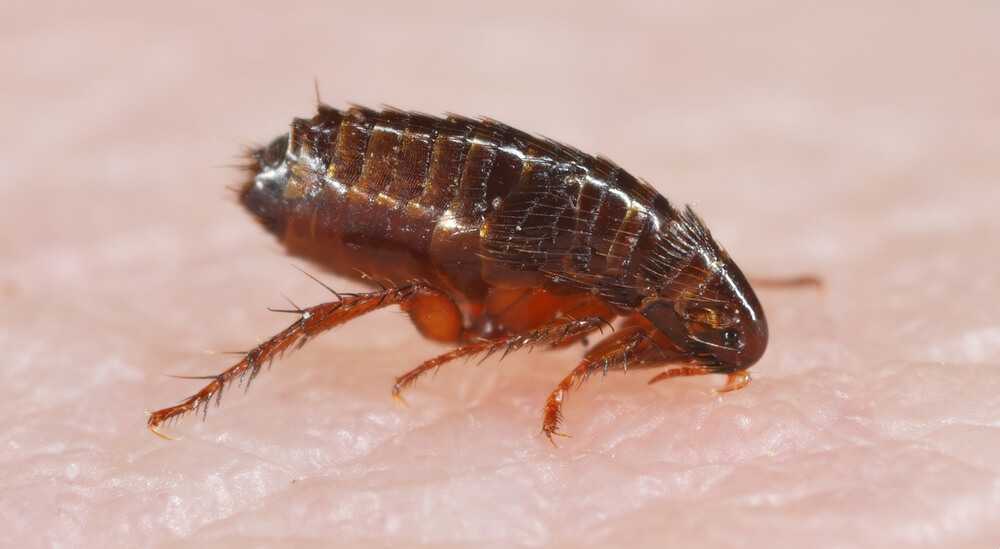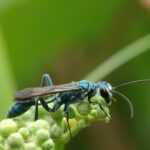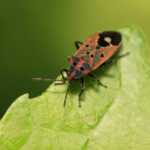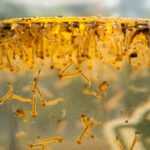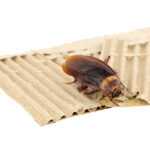What are flea bites?
What Do Flea Bites Look Like? Bites are small, red bumps that occur when fleas, small parasitic insects, feed on the blood of their host. Fleas are notorious for infesting homes, pets, and other animals. They have a specialized mouthpart that allows them to puncture the skin and siphon blood from their victims, leaving behind irritating and sometimes painful bites. Though they are more commonly associated with pets, flea bites can also affect humans, especially in areas with high flea activity or poor pest control.
Where are fleas found?
Fleas are highly adaptable and can be found in various environments. They thrive in warm, humid climates but can survive in many other places as long as they have access to hosts like animals or humans. Fleas are most commonly found in areas where pets frequent, such as homes, backyards, parks, and kennels. The larvae typically develop in carpets, bedding, and grassy areas, making these locations prime flea hotspots.
Why do fleas bite?
Fleas bite because they rely on blood as their primary food source. These small insects need to feed on blood to survive, reproduce, and grow. Both male and female fleas bite, and while they typically prefer animals like cats and dogs, they will also bite humans if their preferred hosts aren’t available. The flea’s bite is a natural feeding process, and it can happen quickly, often before the host even notices.
Do fleas bite humans?
Yes, fleas do bite humans. While fleas prefer animal hosts, they will bite humans if given the opportunity. Human flea bites are common in homes with pets or in places where animals have a strong presence. Flea bites on humans usually occur on the lower parts of the body, such as the legs and ankles, as fleas cannot jump very high. However, they can also bite other exposed areas like arms and the torso.
What happens when a flea bites you?
When a flea bites, it injects saliva containing anticoagulants into the skin. This prevents the blood from clotting, allowing the flea to feed more efficiently. The body reacts to this saliva with an inflammatory response, which causes redness, swelling, and itching at the bite site. For some individuals, the reaction to flea bites may be more intense, especially if they are allergic to flea saliva, leading to more significant irritation or even allergic dermatitis.
Why do flea bites itch?
Flea bites itch because of the body’s immune response to the flea’s saliva. When the flea injects its saliva into the skin, the immune system recognizes it as a foreign substance and releases histamine. Histamine causes the itching sensation and contributes to the swelling and redness at the bite site. This reaction is the body’s way of trying to eliminate the foreign substance and protect itself from potential pathogens.
Who is at risk of being bitten by a flea?
Anyone can be bitten by fleas, but certain factors increase the likelihood of being targeted. People who own pets, especially cats and dogs, are at higher risk as these animals are common flea carriers. Those who work or live in areas where fleas are prevalent, such as farms, animal shelters, or rural regions, are also more likely to experience flea bites. Additionally, flea infestations can happen in any household, so individuals in heavily infested homes are at higher risk.
Symptoms and Causes
What do flea bites look like on humans?
Flea bites on humans typically appear as small red bumps surrounded by a slightly inflamed halo. These bites often occur in clusters or lines, especially on the legs and ankles. The central puncture point may be visible, which is where the flea’s mouthpart pierced the skin. In some cases, the bites can become crusted or blistered if scratched or if the individual has an allergic reaction.
What causes a flea bite?
A flea bite occurs when a flea punctures the skin with its specialized mouthpart to feed on blood. Fleas are drawn to warmth, carbon dioxide, and vibrations, which signal the presence of a potential host. When a flea senses a nearby host, it will jump onto the skin and bite to access the host’s blood. Flea infestations, close contact with pets, or residing in areas where fleas are common can all lead to an increased likelihood of flea bites.
What are the symptoms of a flea bite?
The most common symptoms of a flea bite include:
- Red, swollen bumps on the skin
- Intense itching at the bite site
- Clusters of bites, often in rows
- Possible blisters or hives, especially in allergic individuals
- Secondary infections if the bites are scratched excessively
In some cases, individuals may develop allergic reactions to flea bites, resulting in more severe symptoms such as widespread redness, swelling, or even difficulty breathing in extreme cases.
Diagnosis and Tests
How can you tell if it’s a flea bite?
Flea bites can be diagnosed based on their appearance and the presence of other signs, such as flea dirt or fleas themselves on pets or in the environment. The bites are typically small, red, and appear in clusters or lines. A healthcare provider or a veterinarian may help confirm the presence of fleas by examining your pets or home. Additionally, if you’ve noticed flea bites along with pet scratching or hair loss, this is a strong indicator that fleas are present.
Management and Treatment
How are flea bites treated?
Treating flea bites involves soothing the irritation and addressing the cause of the bites, which is usually a flea infestation. To treat flea bites:
- Clean the affected area: Wash the bites with soap and water to reduce the risk of infection.
- Apply anti-itch creams: Hydrocortisone cream or calamine lotion can relieve itching and reduce inflammation.
- Cold compresses: Applying a cold compress to the bites can help reduce swelling and numb the itching.
- Antihistamines: Oral antihistamines, like Benadryl, can be taken to reduce itching and allergic reactions. Addressing the infestation is crucial; treating your home and pets for fleas is often necessary to prevent further bites.
How do I stop flea bites from itching?
To stop flea bites from itching, you can:
- Apply over-the-counter anti-itch creams, such as hydrocortisone.
- Use oral antihistamines to manage allergic reactions.
- Soak the affected area in cool water or take a soothing oatmeal bath.
- Avoid scratching the bites, as this can make the itching worse and increase the risk of infection.
Prevention
How do I stop getting bitten by fleas?
Preventing flea bites starts with eliminating fleas from your environment. Here are some tips to stop getting bitten by fleas:
- Treat your pets: Regular flea prevention treatments for cats and dogs can help prevent infestations. These treatments include topical medications, flea collars, and oral medications.
- Clean your home: Vacuum carpets, rugs, and furniture frequently to remove flea eggs and larvae. Wash bedding, including pet bedding, in hot water.
- Use flea sprays or powders: Apply flea sprays or powders in your home to kill adult fleas and stop their life cycle.
- Wear protective clothing: If you’re in a flea-prone environment, wear long pants and sleeves to minimize exposure to bites.
Bed bug bites vs. flea bites
While bed bug bites and flea bites may look similar, there are some differences:
- Location of bites: Flea bites often occur on the lower legs and ankles, while bed bug bites can appear on any part of the body exposed while sleeping.
- Pattern of bites: Flea bites are usually clustered or in a straight line, while bed bug bites often appear in a zig-zag or random pattern.
- Timing: Bed bug bites often happen at night while you sleep, whereas flea bites can happen at any time if fleas are present.
Flea bites vs. mosquito bites
Although flea bites and mosquito bites can both cause red, itchy welts, they differ in several ways:
- Size and shape: Mosquito bites are generally larger and more swollen than flea bites, which are small and often have a visible puncture point.
- Bite pattern: Fleas tend to bite in clusters or lines, while mosquito bites are usually isolated and random.
- Itching intensity: Both types of bites can cause itching, but flea bites tend to be more localized, while mosquito bites may have a more widespread, raised appearance.
Living With
How do fleas spread disease?
Fleas can spread disease through their bites by transmitting pathogens from one host to another. As they feed on blood, they can ingest pathogens and pass them on when they bite another host. Fleas are known vectors for several diseases, and controlling flea populations is essential to reducing the risk of disease transmission.
What types of diseases can be spread by flea bites?
Flea bites can transmit a variety of diseases, including:
- Plague: Fleas that carry the bacterium Yersinia pestis can transmit plague, a potentially deadly disease.
- Typhus: Fleas infected with Rickettsia typhi can spread murine typhus.
- Cat Scratch Disease: Fleas carrying the bacterium Bartonella henselae can infect cats, which can then transmit the disease to humans through scratches or bites.
When should I see a healthcare provider?
You should see a healthcare provider if you experience any of the following after a flea bite:
- Signs of infection: Redness, warmth, or pus at the bite site may indicate an infection.
- Severe allergic reactions: If you have trouble breathing, swelling of the face or throat, or experience dizziness, seek emergency medical help.
- Persistent symptoms: If the itching, swelling, or redness doesn’t improve with home treatments or worsens, consult a healthcare provider for further evaluation.
Flea Home Protection
Fleas not only cause discomfort with their bites but can also lead to infestations that are hard to eliminate. Protecting your home from fleas requires proactive measures to prevent them from entering, as well as quick action if you suspect an infestation.
Flea Exterminator – How To Identify & Get Rid Of Fleas
If you’re dealing with fleas in your home, it’s crucial to know how to identify their presence and efficiently get rid of them.
Identifying Fleas in the Home
One of the first signs of a flea infestation is seeing fleas on your pets or noticing them in your living areas. Fleas are small (about 2.5 mm in length), reddish-brown, and can jump long distances. They may be seen on furniture, bedding, or on your floors, especially carpets. Another telltale sign is finding flea dirt, which looks like tiny black specks and is actually flea feces. You might also notice your pets scratching excessively or losing hair due to flea bites.
Steps to Get Rid of Fleas
Getting rid of fleas involves a multi-step approach to ensure all stages of their lifecycle (eggs, larvae, pupae, and adults) are eliminated.
1. Treat Your Pets
Use veterinarian-recommended flea treatments for your pets, such as topical treatments, flea shampoos, or oral medications. Flea collars can also be effective at keeping fleas off your pets.
2. Deep Clean Your Home
Vacuum carpets, rugs, furniture, and any areas where your pets frequent. Flea eggs and larvae are often hidden deep within carpets or cracks in floors, so vacuuming is critical. Dispose of vacuum bags or empty the vacuum canister outdoors immediately to prevent fleas from escaping back into your home. Wash all bedding, including pet bedding, in hot water to kill any remaining fleas, eggs, or larvae.
3. Use Flea Sprays or Foggers
Apply insecticide sprays specifically designed to kill fleas. These products often contain insect growth regulators (IGRs) to prevent flea eggs from hatching. Be sure to follow the instructions carefully and treat all areas where fleas may be hiding, such as under furniture and along baseboards. For severe infestations, flea foggers, or bombs, can help cover larger areas but should only be used with proper precautions to avoid exposure to chemicals.
4. Outdoor Treatment
If fleas are present in your yard, treat the outdoor environment with flea sprays or yard treatments. Focus on shaded, moist areas where fleas thrive, such as tall grass, garden beds, and under decks or porches. Keeping your lawn trimmed and using nematodes (natural flea predators) can help reduce flea populations outdoors.
5. Consult a Professional Exterminator
If a flea infestation becomes too difficult to manage, it may be necessary to call a professional exterminator. They can provide a more thorough treatment of your home using specialized products and equipment. Professional exterminators will also assess the severity of the infestation and help you develop a long-term prevention plan.
While it’s helpful to know how to identify and manage flea bites, the best way to ensure long-term protection is by addressing the root cause—flea infestations. Hiring a certified pest control expert is crucial for eliminating fleas effectively and preventing them from returning. Professionals have the expertise, tools, and treatments necessary to tackle even the most severe infestations, ensuring your home is safe for you and your pets.
When it comes to pest control, PURCOR Pest Solutions stands out as a trusted, certified expert in the field. With their comprehensive approach to pest management, PURCOR can help you not only eliminate fleas but also create a long-term plan to keep your home pest-free. Their dedication to customer service and attention to detail ensures that you’ll receive the best care possible.
Don’t let flea infestations disrupt your life. Trust PURCOR Pest Solutions to protect your home and provide peace of mind.
References
- Centers for Disease Control and Prevention (CDC) – Flea-Borne Diseases
- World Health Organization (WHO) – Vector-Borne Diseases
- American Academy of Dermatology – Flea Bites and Treatment
- Mayo Clinic – Flea Bite Allergy Symptoms and Treatment
- Merck Veterinary Manual – Flea Control and Flea-Borne Diseases
Flea bites typically appear in clusters or lines, usually around the ankles or legs. They are small, red, and often itch intensely. In contrast, mosquito bites are larger and appear as individual welts.
Yes, fleas can transmit diseases such as typhus and the bubonic plague. However, these cases are rare in modern times.
Flea bites usually heal within a few days to a week, depending on the severity and whether they are scratched. Infected bites may take longer to heal.
Flea bites are known for causing intense itching, often more so than mosquito bites. The itchiness from flea bites can persist longer as well.
To prevent flea bites, ensure your home and pets are treated for fleas, and take steps to reduce flea populations in your environment.
Yes, fleas can enter your home through other means, such as rodents or wildlife. They can also latch onto your clothing or be brought in from infested outdoor areas, so it’s still important to take preventive measures even if you don’t have pets.
You may notice your pet scratching or biting at their fur excessively, especially around the tail, groin, or neck. Flea dirt (tiny black specks) or live fleas can sometimes be seen in your pet’s fur. If you’re unsure, using a flea comb or consulting your vet can help confirm a flea infestation.
While fleas are more active in warmer months, they can survive and reproduce indoors year-round, especially in environments that provide warmth and humidity. Therefore, it’s important to remain vigilant and maintain flea prevention throughout the year.
In most cases, flea bites heal without long-term complications. However, excessive scratching can lead to infections, and some individuals may experience allergic reactions or develop conditions like Flea Allergy Dermatitis (FAD). In rare cases, fleas can transmit diseases that pose more serious health risks.
If you suspect a flea infestation, start by treating your pets, thoroughly cleaning your home, and using flea control products. For severe infestations, it’s best to contact a certified pest control expert, like PURCOR Pest Solutions, to ensure the fleas are completely eradicated and preventive measures are in place.
"*" indicates required fields
"*" indicates required fields
